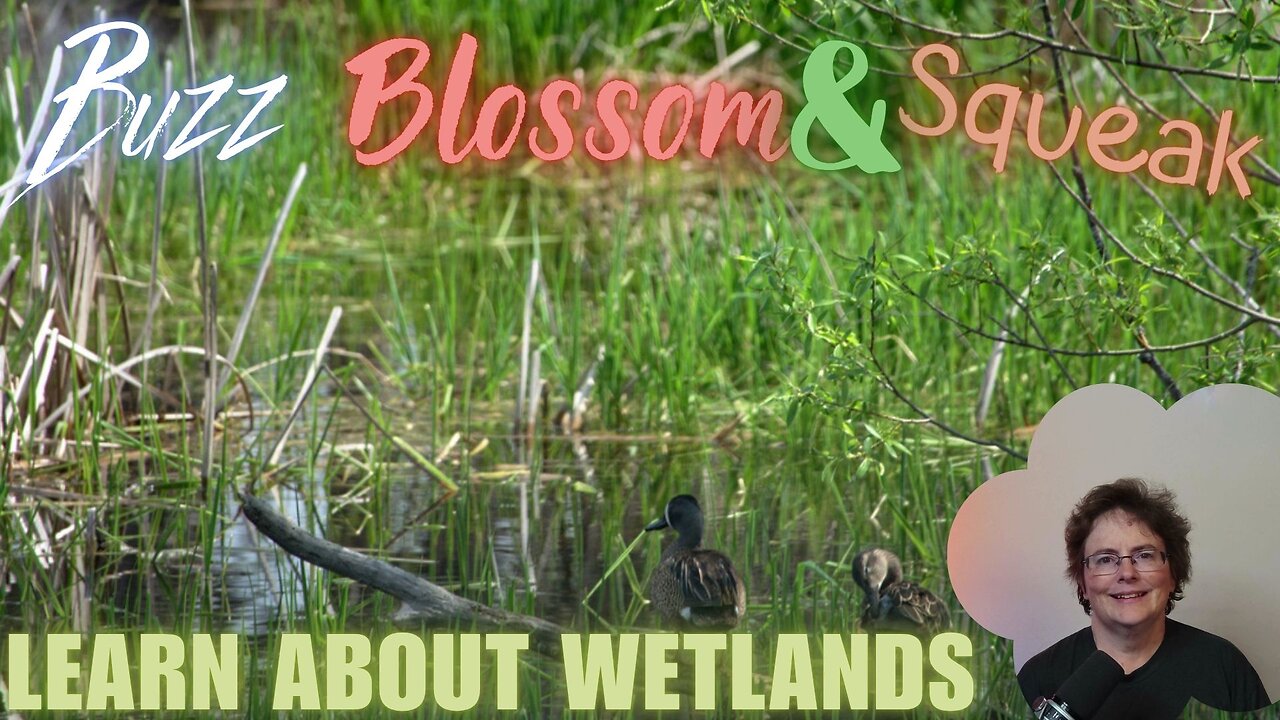Premium Only Content

Discovering the Wetlands Around U
s
In this episode, I explore one of the most underrated landscapes in nature: wetlands. At first, marshes, swamps, bogs, and fens might seem like little more than muddy backwaters. But once you learn what makes each of them unique, you start to see these places for what they truly are—diverse, beautiful, and vital ecosystems.
I start by reflecting on my own experience growing up in the Northwoods surrounded by forests and lakes. Wetlands weren’t something I paid much attention to—until I started spending time in them. Now they’ve become some of my favorite places to visit. With a mix of storytelling and science, I break down the key differences between marshes, swamps, bogs, and fens, and share why they matter more than we might think.
Marshes
Open and grassy, marshes are full of reeds, cattails, and shallow water. They’re often sunny and are home to unique birds like marsh wrens, red-winged blackbirds, and bitterns. I share some of my recent birdwatching adventures, including a surprise encounter with a nighthawk and sightings of muskrats and pelicans in quiet, hidden spots.
Swamps
Swamps are the tree-filled wetlands, where bald cypress trees grow in standing water. I talk about the earthy scent of swamp water, explain the difference between forested and shrub swamps, and recount a funny and startling story involving an alligator and a golf course in Florida. Swamps are rich in wildlife and serve as coastal storm barriers when they take the form of mangroves.
Bogs
These sponge-like, rain-fed ecosystems are acidic and nutrient-poor. I explain how mosses like sphagnum thrive here and how bog plants get creative—some even catch insects to survive. Bogs may seem eerie, but they’re home to some of the most interesting adaptations in the plant world.
Fens
Fens are the colorful, rare cousins of bogs. Fed by groundwater, they support sedges, wildflowers, and butterflies. They’re fragile and beautiful, and in some ways feel like something out of a fairytale.
Takeaways
Wetlands do far more than just sit there and look muddy. They filter water, store carbon, reduce flooding, and provide essential habitat for wildlife. Understanding the differences between marshes, swamps, bogs, and fens helps us appreciate how diverse and valuable these ecosystems really are.
The next time you’re out in nature, take a second look at that soggy patch of land. It might be hiding a whole world you never knew existed.
https://buzzblossomandsqueak.com/?p=436
Jill’s Links
https://buzzblossomandsqueak.com/?p=423
https://www.buymeacoffee.com/smallstepspod
Buzz Blossom and Squeak Website https://buzzblossomandsqueak.com/
Twitter - https://twitter.com/schmern
Blog Headquarters at https://abetterlifeinsmallsteps.com/
Email the podcast at mailto: [email protected]
-
 LIVE
LIVE
Dr Disrespect
4 hours ago🔴LIVE - DR DISRESPECT - ARC RAIDERS - FULL SEND INTO THE RED
1,650 watching -
 1:50:43
1:50:43
Tucker Carlson
1 hour agoChris Williamson’s Advice to Men: How to Survive a World of OnlyFans and AI Girlfriends
32.3K25 -
 1:07:25
1:07:25
Timcast
2 hours agoBomb DETONATED At Harvard, Attacks On Ice Agents SKYROCKET
149K112 -
 1:55:31
1:55:31
Steven Crowder
5 hours agoTucker Carlson & MAGA: Everyone is Missing the Point
377K274 -
 1:11:22
1:11:22
The Rubin Report
4 hours agoWatch Joe Rogan’s Face as Elon Musk Exposes How Dems Are Cheating in Plain Sight
62.1K74 -
 1:01:07
1:01:07
VINCE
5 hours agoThe Walls Are Closing In On The Deep State | Episode 160 - 11/03/25
245K150 -
 LIVE
LIVE
LFA TV
20 hours agoLIVE & BREAKING NEWS! | MONDAY 11/3/25
2,106 watching -
 1:31:18
1:31:18
Graham Allen
6 hours agoErika Fights Back: Vows To EXPOSE TRUTH & DEMANDS Trial Goes Public!! Left Says Her Grief Is FAKE!
159K82 -
 2:08:47
2:08:47
Badlands Media
10 hours agoBadlands Daily: November 3, 2025 – Tariff Wars, SNAP Panic & Brennan Gets Confronted
78.9K20 -
 2:59:32
2:59:32
Wendy Bell Radio
9 hours agoThings Will Get Worse Before They Get Better
101K117